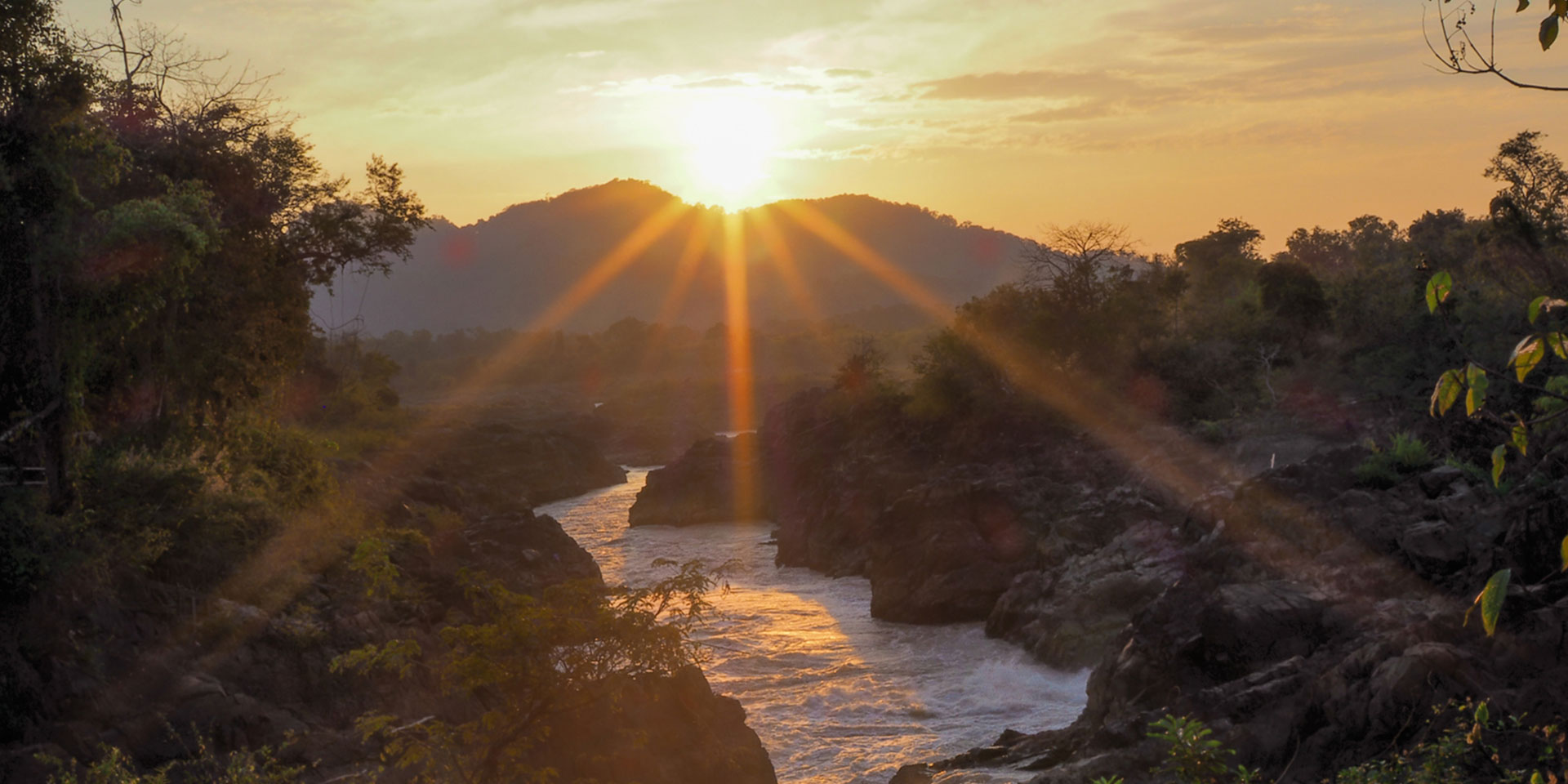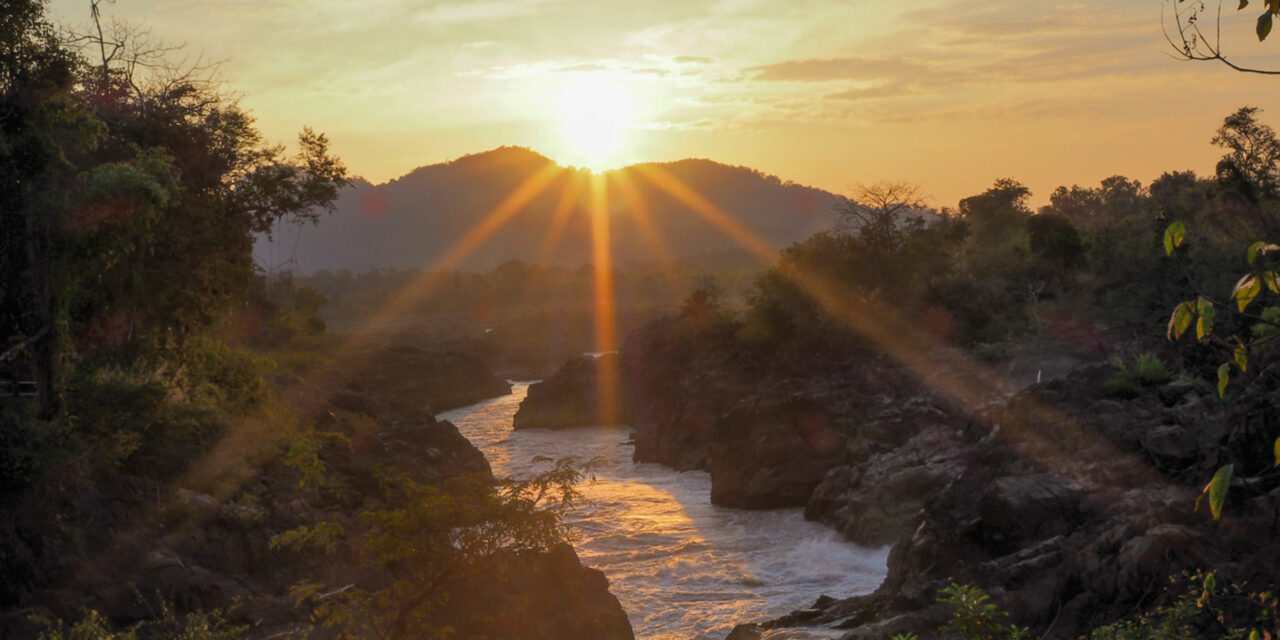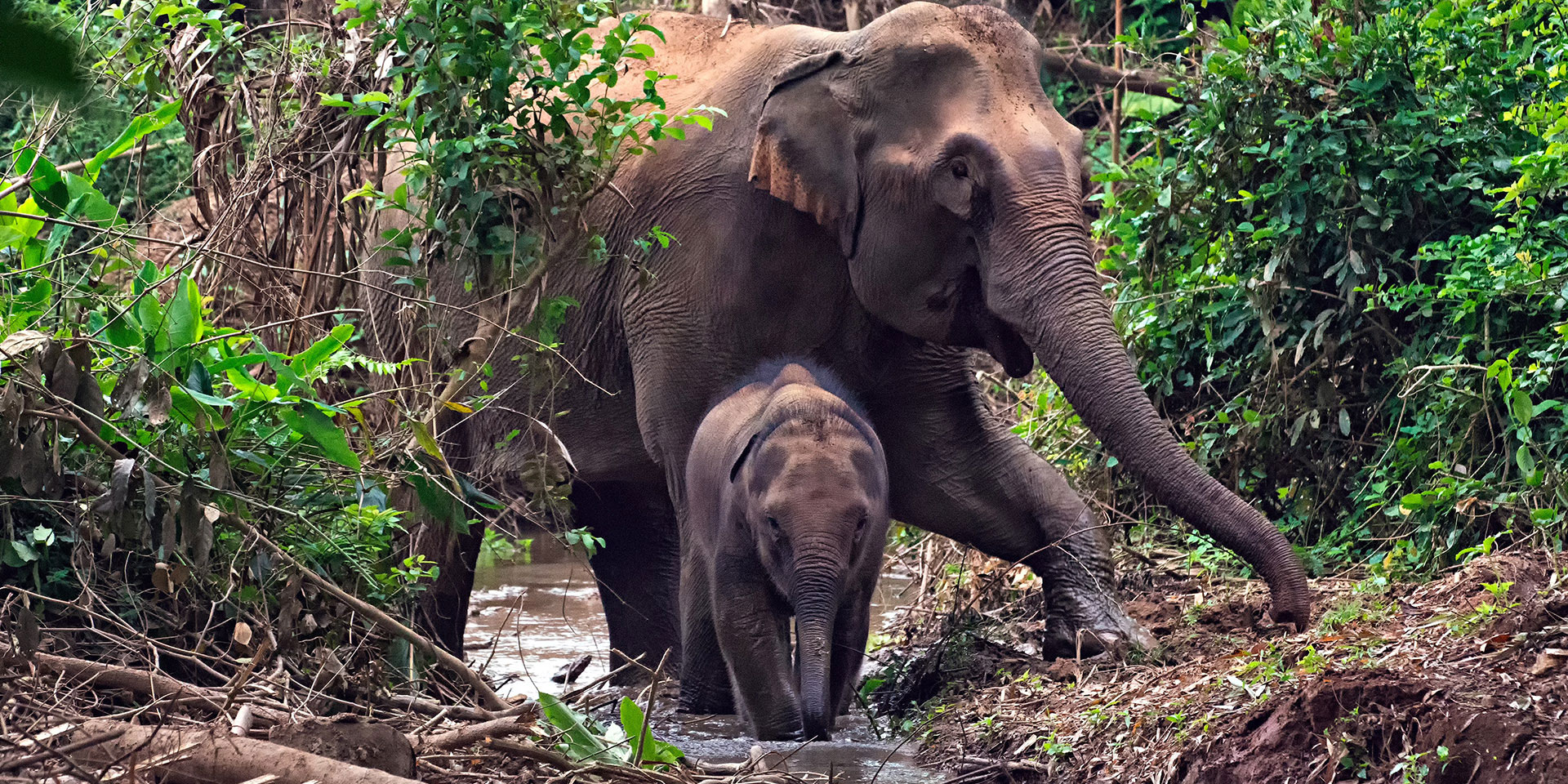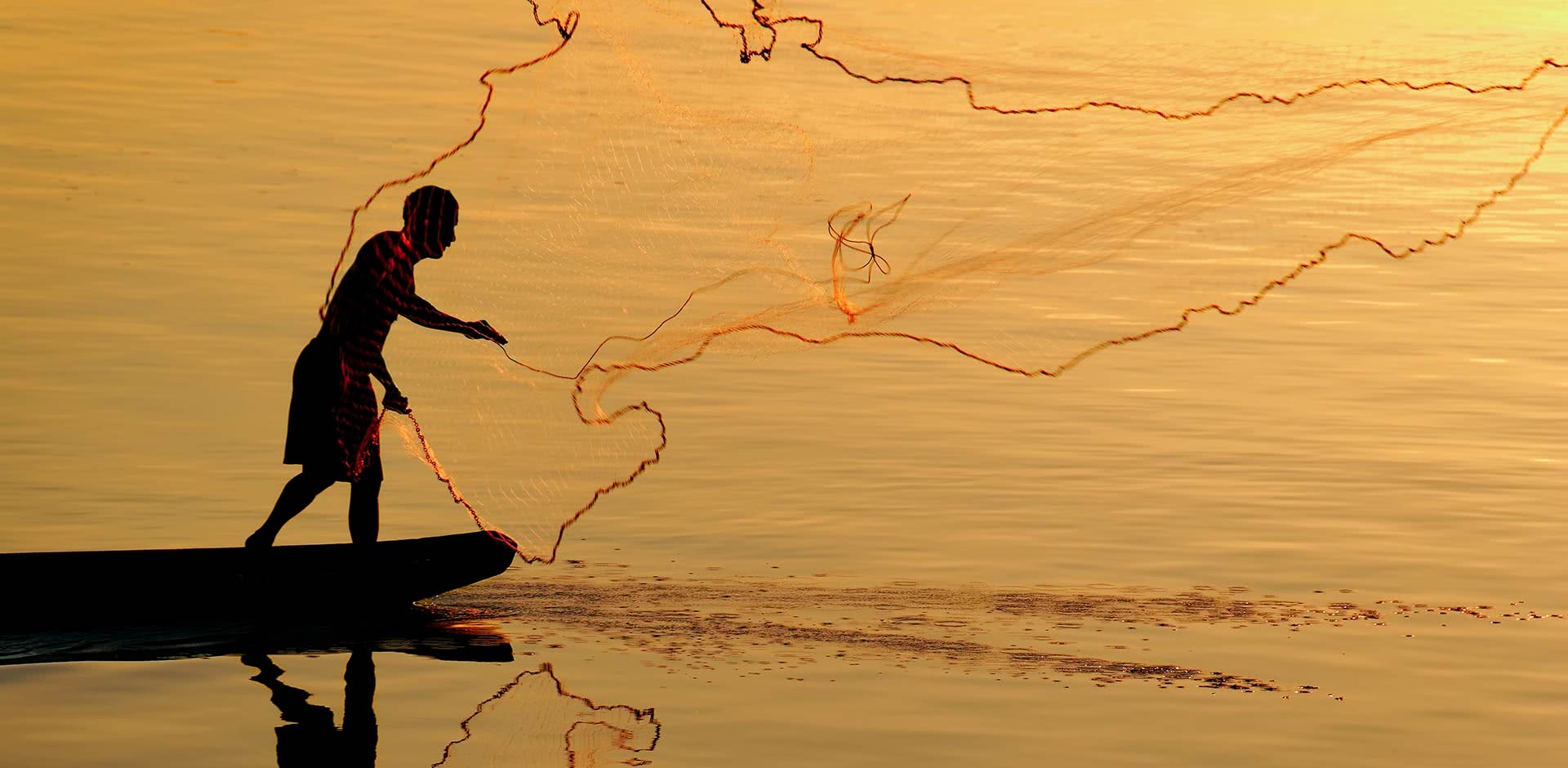The Mekong is one of the great rivers of the world, a watery superhighway for much of Southeast Asia. The river cuts a wide, sluggish path along most of its 4,350 kilometers but a 14-kilometer-long choke point where modern day Laos borders Cambodia divides the river into the upper and lower Mekong. The narrow channels formed here are steeped with hazardous whitewater and cataracts including Khone Phapheng, considered the largest waterfall in Southeast Asia. This hazardous water vexed traders and adventurers until the 21 century when whitewater kayakers with modern technology, mad skills, and nerves of steel more fully explored the area known as Si Phan Don.
Si Phan Don, or 4,000 islands, describing the maze of braided channels which create the islands large and small dotting the Mekong. Some are just large enough for a single person to stand on while others like Don Det and Don Khon are home to local populations. Recently cheap accommodation has given way to the needs of more well heeled travelers, marked by the opening area’s first luxury resort, La Folie Lodge on the massive Don Daeng – a sprawling island on expansive Mekong beaches.
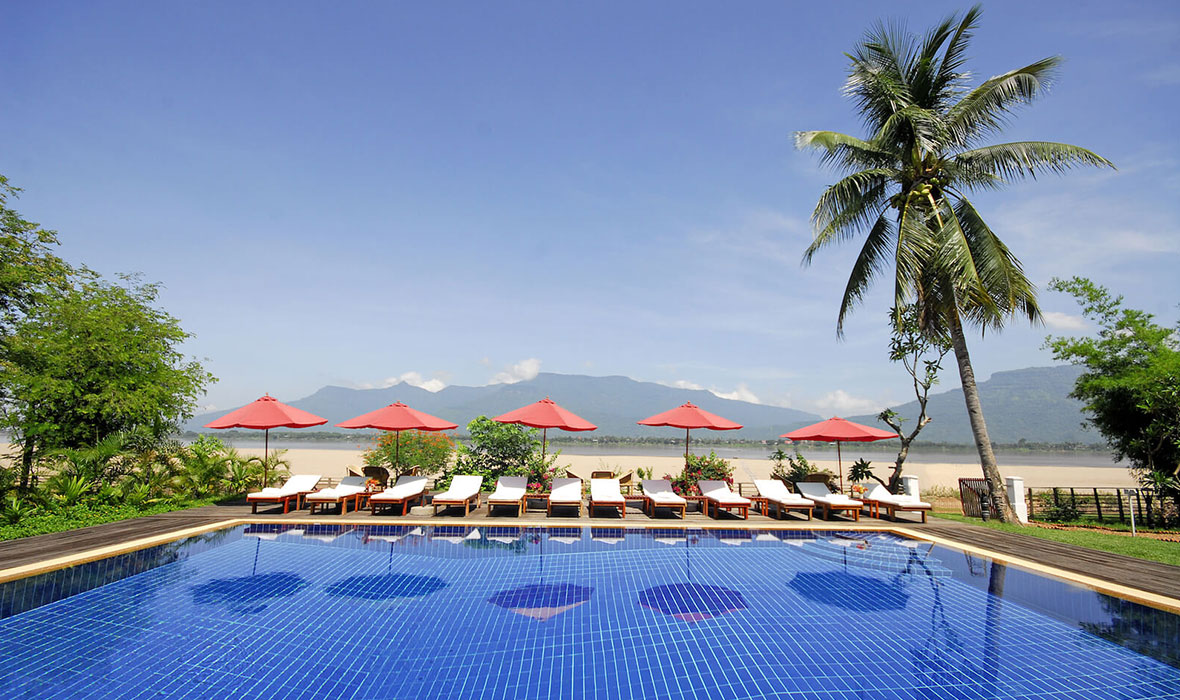
ABOVE: Mekong view from the pool at La Folie.
While most travelers to the area are satisfied with relaxing in a hammock, cycling along the dirt roads to take in the waterfalls, or perhaps joining an expedition to track down the elusive Mekong dolphins, groups of intrepid whitewater kayakers have been mapping out the channels and drops throughout the islands for almost two decades.
In the early years there was no real information about the chutes in the area, considered impassable by most river traders despite attempts recorded by French explorers in the 19th century. With specialized whitewater kayaks and techniques honed by hundreds of hours of paddling in rapids, paddlers today have run nearly every chute and hucked every put-in available.
Si Phan Don is divided into four distinct areas of class IV and V runs that harbor their own unique series of challenges and hazards. Somphamit Waterfall Park is a unique site in the world for kayaking and the spot for getting the feel for local conditions: taking measure of the water, experiencing the dense jungle that closes in the much of the river, and learning to identify the human-sized fish traps that line all the chutes on the Mekong.
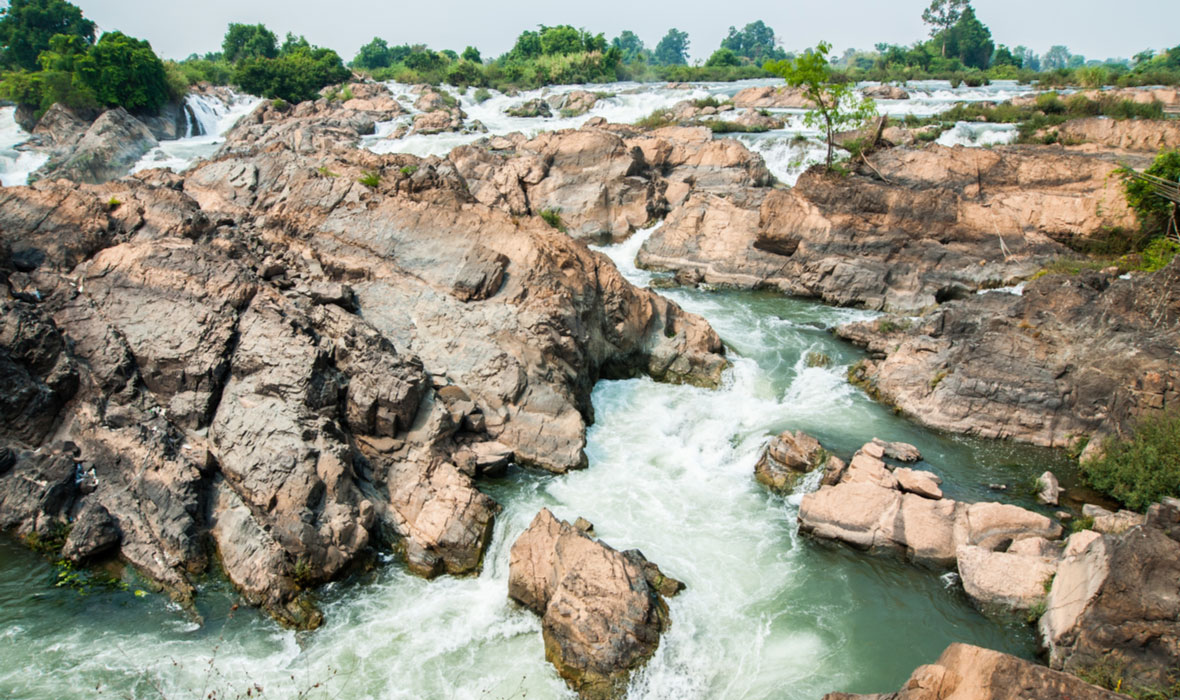
ABOVE: Somphamit waterfall in Laos.
The waterfall park is easily accessible from a number of different channels including Gutter or Easy Chute for a warm up. Morning Glory is degrees more difficult with a stout hole that leads into a 25 foot falls. There is also Mega Slide; the name of which speaks for itself. Each of these chutes end in the same pool where food and tuk tuks are available to get back up river.
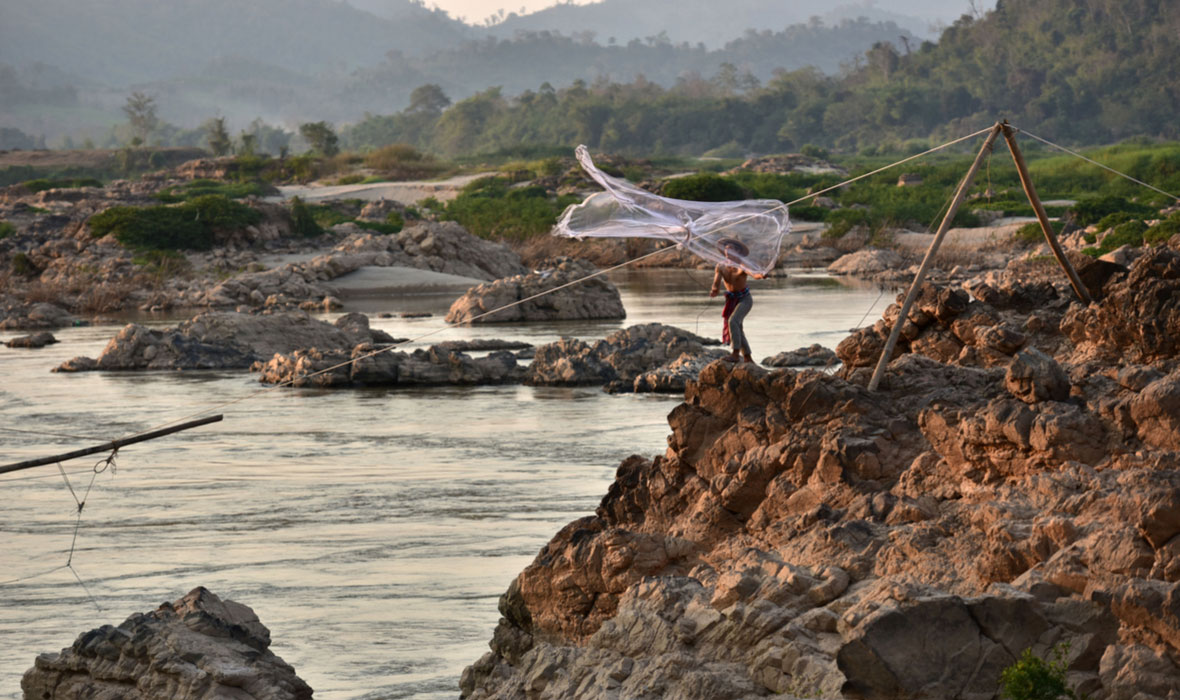
ABOVE: Fisherman throwing his net in the waters of the lower Mekong.
The central channels of the river, though not visible from any land point, are worthy of exploration for skilled paddlers. Dominated by Dead Cow and Volume with smaller, walled-in chutes running off downstream, these runs are known to have expert level holes and require a higher flow of water to negotiate safely – as well as thorough reconnaissance.
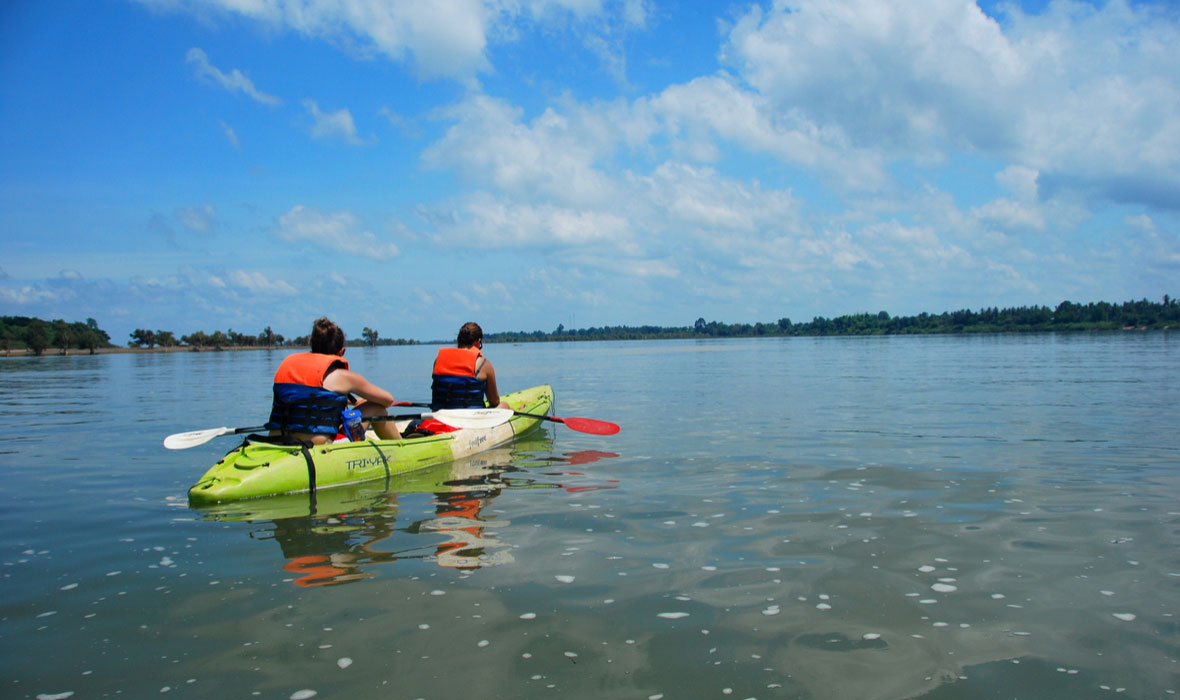
ABOVE: Kayakers on the Mekong River.
Heading to the Cambodian side of the river is a mission onto itself but once there expert, class V level senders will be rewarded with Mr. Clean: an intimidating 20 to 30 foot falls which can be intimidating at first sight but turns out to be a clean enough drop to be lapable. Paddlers are advised to take a high, upstream start to avoid being drawn into chutes that have yet to be negotiated. All known chutes end along the Cambodian edge with a stout rapid ending the run.
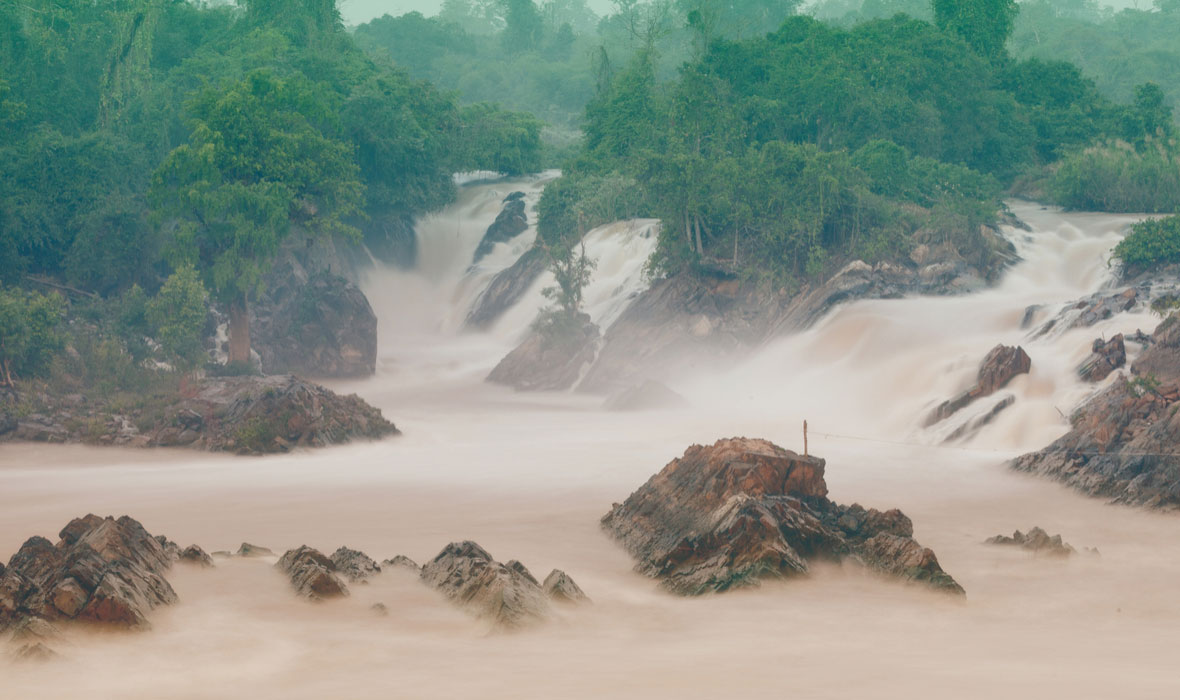
The section known as Laos side is the least explored, mostly because the main channels feed Khone Phapheng, or Big Falls. At nearly 70 feet high and 35,376 feet wide with an average water flow greater than Niagara, Big Falls is the largest waterfall in Southeast Asia and is the main reason the Mekong is not fully navigable. To date there has been no attempt to paddle the main channels of the falls and top level kayakers who have visited judge that either a major development in technology or a serious personal breakdown is needed before it will be.
Kayaking in the area isn’t limited to hardcore senders with little regard for their bodies. There are numerous local companies that take travelers on flat channels along the river to explore the riverside vegetation and offer hopeful glimpses of local wildlife, but for dedicated whitewater paddlers the abundance of rapids, holes, sluices, and falls at Si Phan Don are unmatched in the world. The chance that one may paddle for an entire day without seeing another boat is just the cherry on top.

